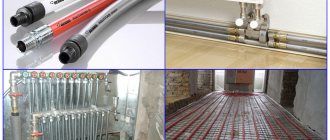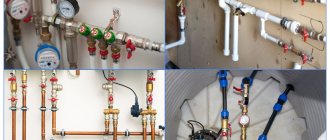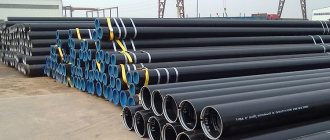Professional construction is the lot of specialists. A simple human understanding of the issue, which does not go beyond the scope of repairs in one’s own apartment or house, is not able to explain in detail the role of specialized equipment in the direction. It is precisely this narrow knowledge of the topic that leads to the fact that many companies, just starting their journey, make a mistake and choose completely inappropriate equipment for certain projects.
There is no such project, during the implementation of which it would not be necessary to lift and lower heavy products, load and unload certain elements.
For these purposes, the use of cranes is provided.
All of them are clearly divided into
- pavements and
- gantry.
The category determines the functional purpose. Bridge prototypes are great for confined spaces. The unit moves on rails. The gantry version is designed to lift loads to the required height and lower them down.
When choosing the optimal type of device, you should also pay attention to such a parameter as the maximum load capacity. For example, a very common type is a single girder crane, which can have both a bridge and a gantry structure. It can easily handle products whose weight does not exceed 32 tons. A double girder crane is capable of handling heavier loads, in particular such as reinforced concrete materials and metal structures. To correctly assess the parameter, it is enough to simply estimate the dimensions and weight of the load that needs to be lifted during working hours.
The crane can operate on the basis of electricity, which is very convenient in confined spaces. An alternative can be prototypes of equipment that function only when using diesel fuel and diesel fuel. Each power source has its own positive and negative sides. As for the aspect of efficiency, for each specific project and for the specifics of each individual construction, a certain option will be suitable, which will be the most effective.
The selection of specialized equipment, including the optimal crane model, must be carried out at the first stages of construction. If, for example, you need an overhead crane, then it is extremely important and rational to install rails under it in the first stages of construction. Likewise, it is important to calculate the space in which the device will be actively used.
Load-lifting cranes are an integral part of the mechanization of production processes. Moving large cargo and heavy components is impossible without special mechanisms.
Depending on the operating conditions, the nature of the load, and the existing supporting structures, different types of load-lifting cranes are used.
Types of cranes for indoor and outdoor areas
Lifting equipment is irreplaceable in a wide variety of industries and production.
Their use is becoming more and more widespread, since at the moment it is possible to produce this type of equipment in any type and variation, taking into account the individual requirements of workshops and premises, as well as technological and production processes.
Bridge lifting equipment is becoming more and more in demand every year
Indoor crane
Overhead cranes are used in closed workshops and premises. There are a huge variety of them. They can be small single-beam or double-beam, having a large load capacity. There are also different types of load-handling mechanisms. Their choice depends on the purpose of use and the characteristics of the production process. If necessary, the design option can be fireproof or explosion-proof.
Suspended and support overhead cranes are installed under the ceiling. Their design features are such that, with significant space savings, it is possible to achieve maximum functionality. Economic benefits, among other things, are achieved due to the possibility of almost 24-hour uninterrupted use of the equipment.
For enclosed spaces, the use of overhead cranes is an excellent solution for performing many production tasks.
The development of overhead crane projects is often carried out on an individual order; in this case, not only the tasks that the equipment will perform, but also the features of the room are taken into account, and all possible loads are also calculated.
In order to operate such a large machine, the operator must be trained as a crane operator and undergo timely safety training. There are also several control options:
- from a cabin mounted on a beam;
- from the floor, from a wired remote control;
- from the floor, from the radio remote control.
Installation and dismantling, as well as technical and warranty maintenance of the overhead crane is carried out in strict accordance with the regulatory framework. A daily inspection of the condition is carried out directly by the person in charge.
Lifting equipment is used to carry not only piece cargo, but also to capture bulk cargo and many others. A variety of types of gripping mechanisms allows you to choose the right crane for any production task.
Crane for construction and open areas
In open areas where an overhead crane is needed, gantry cranes are used to complete the work. This type of equipment differs from conventional bridges in that the beam is located on special supports and the entire structure can stand independently, without additional support.
This type of crane has such an important quality as mobility: if necessary, it can be moved to different areas of the site. It can also have one bridge beam or two. Execution options are fireproof and explosion-proof.
Gantry cranes are often used for construction needs and open areas.
The ease of operation and relatively low cost of gantry cranes make them indispensable in many areas of construction and production in open areas. The amount of lifting capacity, the height of the crane, the width of the spans between the supports may vary, depending on the specifics of use.
How to choose a crane for an indoor or outdoor area?
In order to determine whether an overhead crane fully meets the needs of production or construction work, it is necessary to clearly formulate the tasks that the equipment will perform.
Regardless of where the equipment will be used: in a closed workshop or in an open area, the crane can be designed according to individual orders. This means that its main parameters: dimensions, type of lifting mechanism and others, may vary.
Professional employees of the manufacturing company make calculations and measurements of the crane installation site and carefully determine all the customer’s requirements. This ensures that the finished equipment is suitable for the purposes for which it was purchased and will perform all the assigned tasks. And warranty and maintenance ensures the longest possible service life of the cranes.
23.12.2014
Source: https://kramos-crane.ru/news/vidy-kranov-dlya-zakrytykh-i-otkrytykh-ploshchadok
What is cretinism?
This is the most likely result of intrauterine or childhood hypothyroidism, that is, a lack of thyroid hormones. Characterized by almost total physical and mental underdevelopment.
Thyroid hormones are extremely important as they regulate metabolic processes in the human body. If the production of hormones is reduced, then the metabolism slows down. To fully understand this, imagine:
- the number of heart beats is reduced;
- blood flow speed decreases;
- cells of all internal and external organs/systems receive less nutrients and are poorly disposed of waste products;
- Cell growth, tissue renewal and regeneration deteriorate.
Patients with cretinism hardly grow and hardly develop
Cretinism is often talked about as a childhood disease. We can agree with this statement. Of course, hypothyroidism developed in an adult can also have adverse consequences. However, a mature body reacts to a lack of thyroid hormones not so fatally, and with timely treatment, all undesirable conditions are significantly or completely eliminated.
Classification of overhead cranes
The elimination of manual loading and unloading operations, the elimination of heavy manual labor when performing main and auxiliary production operations, comprehensive mechanization and automation of production processes in all areas of the national economy are unthinkable without the use of a wide range of lifting and transport machines.
Modern production flow and automated lines, inter-shop and intra-shop transport, loading and unloading operations in warehouses and transfer points are organically connected with the use of various types of lifting and transport machines and mechanisms that ensure the continuity and rhythm of production processes.
Therefore, the use of this equipment largely determines the efficiency of modern production, and the level of mechanization of technical production determines the degree of perfection and productivity of the enterprise.
With the current intensity of production, it is impossible to ensure its stable rhythm without coordinated and trouble-free operation of means of transporting raw materials, semi-finished products and finished products at all stages of processing and storage.
One of the types of lifting and transport machines is overhead cranes. We'll talk about these taps.
General information
Overhead cranes are used in workshops of repair enterprises and production workshops of construction industry enterprises.
The designs of special overhead cranes are very diverse. These cranes can be sliding along crane rails or rotating around a vertical axis. Rotating cranes include chord, radial and rotary.
Translationally moving overhead cranes have single-beam and double-block bridges with a normal span length or increased to 40–60 m. The lifting capacity of these machines is 400–500 tons or more.
Progressively moving overhead cranes are often equipped with hooks, brackets or special load-handling devices (magnets, grabs, mechanical tongs). Bridge cranes are equipped with trolleys designed to lift and move loads along the span.
Carts can move on rails, mounted on the upper or lower chords of bridges. Carts moving along the lower chords of bridges can move along transition bridges from one bay of the workshop to a nearby one.
Walkways with rails for trolleys are located under the crane beams and have trolleys for powering electric motors.
Carts moving along the upper and lower chords of bridge beams can be equipped with rotating booms, slewing bearings and rotating parts rotating around vertical axes. Booms equipped with load-handling devices are located on the rotary axes.
Overhead crane mechanisms provide three movements: load lifting, trolley movement and bridge movement. The lifting mechanism is an electric hoist connected to a double pulley; with a carrying capacity of more than 10 tons.
cranes are equipped with two independent lifting mechanisms - the main and auxiliary, having a lifting capacity equal to approximately 0.25 of the main one, and used for lifting small loads at high speed.
Details about overhead cranes
An overhead crane is a crane with a load-lifting device that is suspended from an electrical system. This system moves on a steel structure that moves.
Types and types of overhead cranes
Cranes are divided according to the type of bridge structure into: supporting bridge crane, overhead bridge crane, gantry bridge crane.
Overhead cranes are available for general purpose as well as special purpose. General purpose cranes include cranes that have a hook to lift a load. Special-purpose cranes include cranes that have a special gripping device.
Cranes are divided according to the type of bridge structure into:
- Support overhead crane;
- Overhead overhead crane;
- Gantry overhead crane.
External view of the gantry crane
The support crane bridge rests on rails. The support crane can be: electric single-beam and double-beam, manual single-beam and double-beam, and there is also a special electric one (magnetic, grab).
The gantry overhead crane is located on two beams, which are mounted on overhead rails. The overhead overhead crane is attached to rail supports.
Suspended cranes are:
- Manual single beam;
- Electric single beam.
Each of the three types of cranes comes with a manual drive and an electric drive. Cranes are also differentiated by the amount of cargo they can lift. The first group includes cranes that can lift a load of up to five tons (link to an article about a crane with a lifting capacity of 5 tons). The second group includes cranes with a total lifting capacity of five to fifty tons. And the last, third group is a carrying capacity of over fifty tons.
Features of overhead cranes
An overhead crane must have a supporting structure, a mechanism for lifting the load, as well as a hook that is used to hook the load and lift it.
The crane bridge consists of two beams that are attached to the main one.
Beams are small boxes or cubes, have a horizontal belt (upper and lower), as well as two vertical walls. The edges of each rail are reinforced with special supports, this is done in order to limit the movement of the bridge within the bogie.
The side platforms of the beams have special transitions designed for workers to access the mechanisms and structure of the crane. This ensures hassle-free repair of damaged crane parts.
An overhead crane must have a supporting structure, a mechanism for lifting the load, as well as a hook that is used to hook the load and lift it. All of the above mechanisms are driven by an electric drive.
Depending on where the crane is used and what tasks it performs, the overhead crane should be:
- workshop;
- construction;
- transport;
- deck
The workshop crane is designed for loading and unloading cargo located at the enterprise in special workshops. It is usually located along the entire length of the workshop. These cranes consist of a lifting bridge and a trolley. There are also special cranes, for example, metallurgical ones. They are used in foundries.
The crane beam has a main beam, that is, a bridge, which is located above the span, as well as end beams. The design of the crane beam includes a carriage and a mechanism designed to lift the load. The double girder overhead crane is used in unloading and loading shops, indoors and outdoors. The single girder crane is used for lifting work in buildings and workshops in industry.
Each crane has mechanisms for grasping loads of various shapes and designs. These gripping mechanisms also each have their own function. This is what the grab mechanism looks like
The hook grip mechanism is equipped with hooks for loading and unloading single loads. If you need to reload bulk solids, use special buckets. A grab mechanism is used specifically for reloading bulk substances.
It is a type of bucket that is opened using a special drum. Magnetic – is a hook with a magnet and is designed to move iron loads. A very versatile and compact mechanism – magnetic clamshell. Mold - this mechanism has a box that is used to transport crushed metal. The beam crane has special gripping arms that grip small loads.
Source: https://mostovoi-kran.ru/podrobno-o-kranakh-mostovogo-tipa/
Main components and mechanisms of lifting machines
Drums
() are used for winding steel rope. To ensure that the rope is wound evenly, spiral grooves of a semicircular cross-section are made on the drum.
Figure 24 – Drum
The rope capacity of the drum must be such that in the lower position of the load-handling element on the drum, at least one and a half turns of the rope remain wound, not counting the turns located under the clamping device.
The drum is rejected if it has cracks of any size, or wear of the grooves along the profile is more than 2 mm.
Block
() - a disc-shaped part with a groove around the circumference for placing a rope. The blocks serve to guide the rope. The blocks must have a device that prevents the rope from leaving the block stream.
Figure 25 – Block
Blocks are rejected if the wear of the strand is more than 40% of the original radius of the strand. It is strictly prohibited to operate a block with a chipped flange, since a chipped flange can cause the rope to come off the block and sometimes cause the rope to be cut.
Pulley hoist
– a lifting device consisting of movable and stationary block cages, through the blocks of which ropes are passed.
The number of branches of the rope into which the weight of the load is distributed is called the pulley multiplicity
. The factor indicates how many times the force applied to the rope is reduced.
Cargo Hooks and Loops
– universal load-handling organs. According to their shape, cargo hooks are divided into: single-horned and double-horned, and according to the manufacturing method: forged (stamped) and plate. Hooks for loads exceeding 3 tons must be manufactured rotating on closed ball bearings. Safety locks are installed on cargo hooks when removable load-handling devices may spontaneously fall out of the hook mouth.
Crane operation is not allowed if the hook has the following malfunctions:
- cracks and tears on the surface of the hook;
- the hook does not rotate;
- the safety lock is missing or faulty;
- the hook is unbent;
- the wear of the throat is more than 10% of the original height of the working section.
Welding or sealing of hook defects is prohibited.
Sometimes, instead of cargo hooks, solid forged and detachable cargo loops are used. With equal load capacity, the loop has smaller dimensions and weight compared to the hook, but the loops are less convenient to use.
Hook suspension
() consists of two side cheeks, blocks, a traverse and a hook. The hook traverse is installed in the side cheeks and is secured against axial movement by two locking bars. During prolonged operation, the nut that is screwed onto the thread of the hook when securing it in the hook cage may loosen or come loose.
Figure 26 – Hook suspension
To prevent this, it is reinforced with a locking strip. Locking the nut using pins or cotter pins is not allowed.
Lifting cranes
Single girder overhead crane is one of the types of load-lifting overhead cranes. A feature of this type of crane is its relatively small lifting capacity. The lifting mechanism is a hoist moving along a supporting beam.
Types of overhead single girder cranes
There are two types of single girder overhead cranes:
- Supporting - the load-bearing beam rests on rails (P24), which lie on the crane beams.
- Suspended - the load-bearing beam is suspended from the bottom flange of I-beams (30M), which can be installed under the ceiling or cantilevered into the walls of the building.
|
|
Scope of application for overhead cranes
Single girder overhead cranes are used:
- for lifting, moving and lowering loads for various types of work;
- indoors or outdoors under a canopy;
- with light or moderate intensity of work;
- at temperatures from -20 to +40 °C (special execution from -40 to +40 °C is possible).
Types of control of a single girder overhead crane
The overhead crane can be controlled in two ways:
- Manual drive. The design of such cranes uses a manual hoist for lifting, as well as chain mechanisms for moving the crane and hoist. Human effort is used as the driving force of the crane and hoist. Such beam cranes are used for lifting smaller loads and in enterprises where the speed and productivity of lifting equipment does not play a decisive role, but efficiency in use, on the contrary, is important.
- Electric drive. Lifting and lowering of loads, as well as the movement of the hoist and crane around the room near the electric crane beam, is carried out using a geared motor or drives based on a motor with a gearbox. Typically two or four drives are used.
: 24.09.2012 00:00
At large industrial enterprises, double-girder overhead cranes are among the most in demand. They have a greater carrying capacity (up to 320 tons). The crane's lifting mechanism is installed on a special trolley located between the crane beams, due to which the weight of the load is evenly distributed between the beams.
Examples from the catalog
Collapsible crane KSP - 1000 "Master"
. The boom type device is installed on the ground and floors of buildings. The dismountable model allows installation without the use of equipment. Use of the device is permitted at temperatures from +40° to –40°C, humidity 80%. The diameter of the special equipment rope is 8.3 mm, the weight of the crane is 950 kg, the weight of counterweights is 700 kg. With a double reeving, the lifting speed reaches 22 m per minute, with a single reeving - 44 m per minute. The technique is used to lift, lower and transport loads around a circle.
Construction crane HGS-G200Y-30
. The technique is used to lift, lower and hold a load in a raised state. Can be used in open and closed areas. Depending on the task, the crane is used with a magnetic gripper, slings and other equipment. The crane's lifting capacity reaches up to 200 kg, lifting height is 30 m, speed is 21 m per minute. Rope length - 31 m, diameter - 4 mm.
Crane in the window “Umelets-M”
. The device is used when lifting, lowering and moving cargo weighing up to 320 kg. The design of the equipment with wheels and a boom reach of 2 m ensures ease of movement of the equipment. The working tool of the lifting mechanism is a cat with a suspension. The mass of the crane is no more than 220 kg, counterweights are no less than 210 kg. Rope diameter 4.1 mm. Lifting speed from 17.5 m to 20 m per minute.
Technical characteristics of overhead cranes
An overhead crane becomes an indispensable assistant in areas where various construction, loading and unloading operations take place. Simplicity and constant load capacity are the main advantages that overhead cranes have, but there are other positive features as well.
Types of overhead cranes: what are they?
Two groups are distinguished by design:
- Hanging.
- Supporting. For movement they use special rails.
The rails are located inside fixed supports.
Several varieties can be distinguished depending on the weight with which the installations operate:
- The first variety is up to 5 tons.
- The second – up to 50 tons.
- The third – up to 300-320 tons.
The purpose also varies. Models can be special or general. The latter perform standard lifting work for any objects.
An overhead crane may belong to one of the following drive groups:
- When physical effort is required from the operator for the winch to start moving and the assigned tasks to be completed.
- Electrical. With energy transmitted through an electric motor.
The type of movement is another difference between the designs:
- Single beam.
- Double beam. The stability and reliability of such structures is increased. The products are subject to less wear and are capable of lifting loads to maximum heights.
What are the main characteristics of overhead cranes?
The technical characteristics of the overhead crane can be described as follows:
- Ability to lift loads of various weights, from 0.25 to 500 tons.
- The crane span rarely exceeds 40 meters.
- Lifting height. It is determined by other characteristics such as the vertical size of the load and the specific dimensions of the room.
- How the end beams and the track are positioned relative to each other.
- Number of span beams. There is only one for cranes with a lifting capacity of up to 5 tons or less.
Single-span structures are lighter in weight, but are more difficult to maintain.
In most cases, a special remote control is used for control. The main thing is that it has an appropriate alarm system that sends messages to workers. The drive speed and the performance that the electric bridge crane will have depend on the load capacity.
Operating mode and operating features
The intensity of use in the future determines which design is recommended for a particular buyer to choose. According to the adopted GOST, the operating modes of cranes have several designations - from 1K to 7K. Technical characteristics are calculated depending on how and under what conditions the future installation is used. The power of a metal structure is also determined by similar parameters.
There are several rules here:
- 1K-3K modes. They are suitable for cranes for minor and rare types of work. An example is the need to lift some workshop equipment in order to carry out maintenance of tools and repair them. In a mode no heavier than 3K, cranes with one span should be operated.
- 4K-5K. This mode of operation is called medium. Typical for most cranes used by enterprises to organize basic production processes.
- 6K AND 7K – heavy and very heavy modes. Most often, this function is used by enterprises that belong to metallurgical production. Among lifting mechanisms, these devices are considered the most powerful. They work under difficult conditions, in constant mode. Modern entrepreneurs also need these types of overhead cranes.
Learn more about control options
Operating overhead cranes involves three scheme options:
- Using a special cabin. This is a special structure, which is often mounted on a crane bridge. It is in this room that the controls are concentrated. Structures can be open or closed. The working area can be easily viewed by the operator who is inside. Crane control is based on recommendations given by the slinger.
- Radio control. This method has recently gained recognition. The workers appreciated the convenience of this method. Systems are being developed that allow cranes to be controlled remotely, at a distance of up to 100 meters. Thanks to this, operators become mobile and increase security.
- Using the cable remote control. This control is the simplest and has the lowest cost. Implemented in conjunction with single-beam devices. They are supplied with different brands of equipment.
What other features do overhead cranes have?
In appearance, crane bridges are two beams connected to a third, main one. The beams look like small cubes or boxes. At the top and bottom there is a part with a horizontal belt. The design is complemented by two vertical walls.
https://www.youtube.com/watch?v=yfLsoyQMX7g
Special supports help strengthen the edges with which each rail is supplied. This device contributes to the appearance of restrictions when moving inside the cart. Beam side platforms are mounted with special transitions. The purpose of this part is to gain access to the internal parts of the structure for workers. This makes repairs and maintenance easier.
The following components are required for overhead cranes of any design:
- Basic structure.
- Mechanism that lifts loads.
- Hook.
All parts described above are driven when the electric motor is started.
It is worth highlighting the so-called grab varieties. They are equipped with buckets, which are opened using a special drum. Versatility is typical for magnet-grab installations. Each device has its own purpose, although the design remains the same overall.
Famous brands of cranes
There are not so many manufacturers of this equipment, but now the consumer can choose both domestic and Russian analogues:
- LLC Perm Industrial Equipment Plant. High precision cranes are produced using machine tools and modern tools.
- Harland&Wolff. One of the largest shipyards engaged in shipbuilding. Located in Northern Ireland, in the city of Belfast.
- Crane, in Lyubertsy. It has been presenting its products on the lifting equipment market since 2005. Uses the services of only specialists with extensive practical experience.
- United Crane Technologies LLC. An enterprise with buildings with a total area of 5000 square meters.
- Automobile plant URAL.
- Chelyabinsk Tractor Plant LLC.
- Mercedes Benz.
- Terex Corporation.
These are just some of the companies that produce construction and industrial equipment. The lifting capacity of overhead cranes is determined individually for each customer.
Typology by tower parameters
The design of the tower affects the lifting capacity of the cranes. This parameter distinguishes between:
1. Lattice taps
. Lightweight thanks to the tubular tower design. The tower is assembled from metal tubes and corners, as well as inclined perpendicular rods. These cranes are durable and can be delivered quickly to site, but cannot lift heavy loads.
2. Solid wall valves
. Heavy but reliable - used in large-scale construction: skyscrapers, industrial buildings, ports. Such towers remain operational at low temperatures, so they are often used in northern latitudes.











